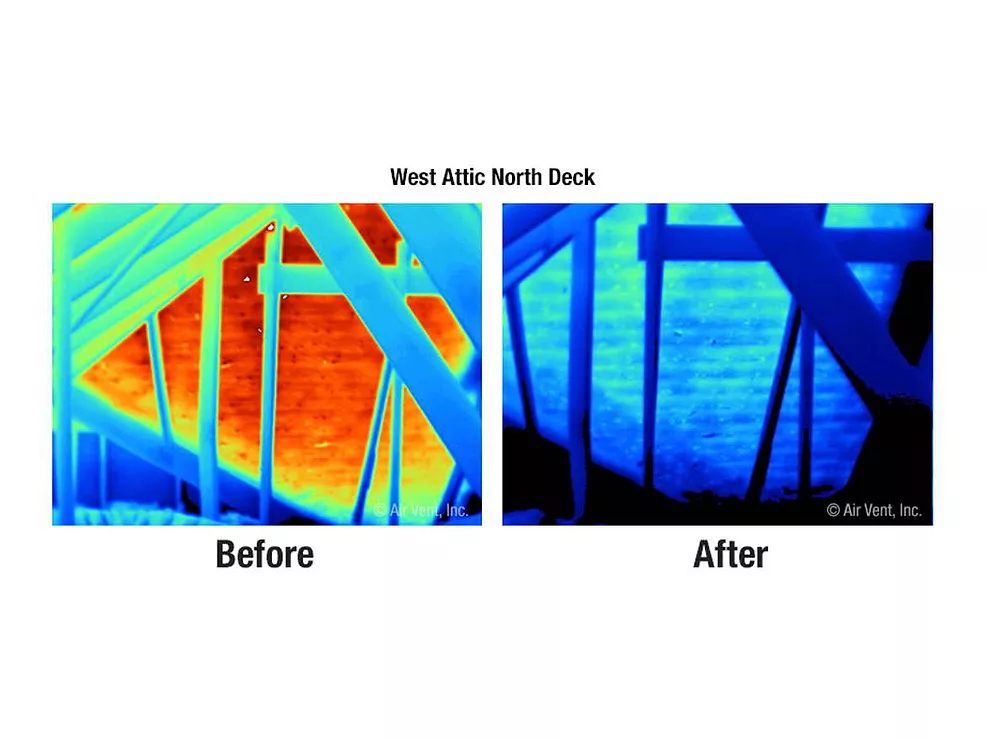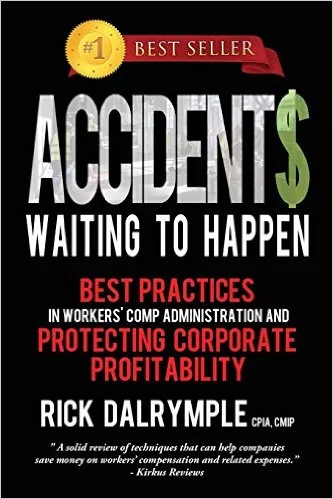LegallySpeaking: Heed OSHA to Protect Workers and Stay Clear of Trouble
Employers are responsible for preserving the health
and safety of their workers. And the government agency that oversees employers’
compliance is OSHA, the Occupational Health and Safety Administration.

Employers are responsible for preserving the health and safety of their workers. And the government agency that oversees employers’ compliance is OSHA, the Occupational Health and Safety Administration.
Under the Occupational Safety and Health Act of 1970, OSHA, which is part of the U.S. Department of Labor, is responsible for setting and enforcing safety standards; providing training, outreach and education; establishing partnerships; and encouraging constant safety and health improvements in the workplace.
With its state partners, OHSA has around 2,100 inspectors, along with complaint discrimination investigators, engineers, physicians, educators, standards writers and other technical and support personnel in more than 200 offices.
OSHA has jurisdiction for nearly every working man and woman in the country, with a few exceptions, such as miners, transportation workers, the self-employed and many public employees.
 In recent years, OSHA has focused on three
strategies:
In recent years, OSHA has focused on three
strategies:
1. Strong, fair and effective enforcement. According to the agency, it works to help the majority of employers who want to do the right thing and focuses enforcement at sites in more hazardous industries.
2. Outreach, education and compliance assistance. As part of its outreach and education, OSHA has developed a Web site (www.osha.gov) that includes a special section devoted to small businesses, as well as interactive eTools designed to help employers and employees address specific hazards and prevent injuries.OSHA also offers publications in print and online and a call center at 800-321-OSHA that supplies workplace safety and health information or assistance for employees.
3. Partnerships and cooperative programs. OSHA offers several partnership and cooperative programs, including the Alliance Program, the Strategic Partnership Program, Safety and Health Achievement Recognition Program and the Voluntary Protection Programs.
Since its inception in 1971, OSHA has helped cut workplace fatalities by more than 60 percent and occupational injury and illness rates by 40 percent, according to the agency. During the same time, U.S. employment grew from 56 million employees at 3.5 million worksites to more than 135 million employees at 8.9 million sites.
According to the agency, there were 5,703 employee deaths in 2006, a slight decrease from 2005. The fatality rate of 3.9 deaths per 100,000 employees was down slightly from a rate of 4.0 in 2005. Fatalities related to highway incidents and homicides increased, while deaths related to falls decreased.
In 2006, there were 4.1 million nonfatal occupational injuries and illnesses, according to the Bureau of Labor Statistics. Nearly 95 percent were injuries. Of these 3.9 million injuries, 2.6 million occurred in service-providing industries. The remaining 1.3 million injuries occurred in goods-producing industries.
Personal Protective Gear
As part of its mission, OSHA recently issued a new rule that requires companies to pay for most personal protective gear that their employees wear. The final rule, which took effect last November, requires that nearly all protective gear be provided at no cost to the employee. At that time, OSHA gave employers six months to comply. In order to be within the law, companies must now be paying for most personal protective equipment, with a few exceptions for items such as ordinary safety-toed footwear, ordinary prescription safety eyewear, logging boots, and ordinary clothing and weather-related gear.
“Employees exposed to safety and health hazards may need to wear personal protective equipment to be protected from injury, illness and death caused by exposure to those hazards,” said assistant secretary of labor for OSHA, Edwin G. Foulke Jr., in a statement. “This final rule will clarify who is responsible for paying for [personal protective equipment], which OSHA anticipates will lead to greater compliance and potential avoidance of thousands of workplace injuries each year.”
According to OSHA, personal protective equipment includes face shields, safety glasses, hard hats, safety shoes, goggles, coveralls, gloves, vests, earplugs and respirators. The equipment is intended to protect employees from serious workplace injuries or illnesses that could result from contact with chemical, radiological, physical, electrical, mechanical or other workplace hazards.
The new rule doesn’t change any requirements regarding what safety gear is needed or when it must be used; rather, it is meant to clarify that employers must pay for the necessary safety equipment, except for those few ordinary items, according to OSHA. Under current federal regulations, employers still must assess their workplaces in order to scout out hazards that would require the use of personal protective equipment. If workplace conditions require that employees need to wear protective gear, employers must select the gear, require employees to use it, communicate what gear must be worn and provide gear that fits workers.
Employers still must train their employees on various aspects of protective gear, including: using it properly; knowing when and what kind is necessary; understanding the limits of their protective gear; knowing how to don, adjust, wear and doff the gear; and maintaining it properly.
OSHA points to three reasons why the new rule will improve safety:
1. When employees pay for their own protective equipment, they are apt to do it cheaply or not at all. OSHA also believes that employees will be more inclined to use protective gear that doesn’t cost them anything.
2. Since they have to pay for it, employers clearly have responsibility for personal protective gear. They are more likely to ensure the right gear is used for the job, that all the gear is in good condition and employees are protected.
3. When employers pay for safety gear, employees will participate wholeheartedly in workplace safety and health programs, according to OSHA.
 Other Department of Labor
Requirements
Other Department of Labor
Requirements
The new changes are not the only requirements that the Department of Labor imposes on employers when it comes to paying for gear and uniforms for employees. While employers are making any necessary adjustments regarding safety gear, it is a good time to revisit all policies regarding the types of clothing used on the job, and who pays for what. For example, the Fair Labor Standards Act (FLSA) also lays out rules about employer and employee obligations for purchasing uniforms.
Uniforms and other items that exist primarily for the benefit or convenience of employers cannot be included as wages. So when it comes to meeting obligations towards paying the minimum wage or overtime salary, employers are not allowed to take credit for these expenses.
The FLSA doesn’t require employees to wear uniforms, so if another law, the type of business or the employer decides uniforms are necessary, cost and maintenance are a business expense for the company. Employers can require workers to pay for their uniforms, but if they choose to do so, employers can’t reduce an employee’s salary below the minimum wage of $6.55 per hour.
To offer clarity on the rule, the Wage and Hour Division of the Department of Labor has created several examples. For example, if an employee makes the minimum wage of $6.55 per hour, employers cannot deduct any money to pay for uniforms, and they cannot require employees to buy them their own.
However, if an employee makes $6.25 an hour and works 30 hours in a work week, the employer could legally deduct $12 - the 40 cents per hour that the employee makes over minimum wage, multiplied by the 30 hours that the employee works.
The FLSA allows employers to prorate such deductions for the cost of the uniform over a period of paydays, as long as those deductions don’t drop the salary below the minimum wage or affect overtime pay.
Employers can require employees to buy their uniforms as a condition of employment, as long as employees are reimbursed on the next regular payday to the extent that the uniform costs cut into minimum wage or overtime compensation.
The same rules apply when it comes to items that are for the “convenience” of the employer, such as work tools or damages to the employers’ property caused by employees. If reducing an employee’s wages would drop compensation below minimum wage or impact overtime pay, deductions are not allowed. This holds true even when an employee’s negligence costs an employer. Employers can’t skirt the minimum wage and overtime rules by forcing employees to pay cash for uniforms and other items.
The Department of Labor has multiple rules regarding personal protective gear and uniforms for employees, and it strictly regulates how those items can be paid for. Failure to comply can land employers in a great deal of trouble.
For more information, employers can consult the OSHA Web site to find out more information about the rule on personal protective gear at www.osha.gov/SLTC/personalprotectiveequipment/index.html.
For more information about the Fair Labor Standards Act, employers can visit the Department of Labor Web site at www.dol.gov/compliance/laws/comp-flsa.htm . Employers who are unclear on the standards may want to consider speaking with an attorney who has knowledge of all the relevant federal, state and local rules.

Employers are responsible for preserving the health and safety of their workers. And the government agency that oversees employers’ compliance is OSHA, the Occupational Health and Safety Administration.
Under the Occupational Safety and Health Act of 1970, OSHA, which is part of the U.S. Department of Labor, is responsible for setting and enforcing safety standards; providing training, outreach and education; establishing partnerships; and encouraging constant safety and health improvements in the workplace.
With its state partners, OHSA has around 2,100 inspectors, along with complaint discrimination investigators, engineers, physicians, educators, standards writers and other technical and support personnel in more than 200 offices.
OSHA has jurisdiction for nearly every working man and woman in the country, with a few exceptions, such as miners, transportation workers, the self-employed and many public employees.

1. Strong, fair and effective enforcement. According to the agency, it works to help the majority of employers who want to do the right thing and focuses enforcement at sites in more hazardous industries.
2. Outreach, education and compliance assistance. As part of its outreach and education, OSHA has developed a Web site (www.osha.gov) that includes a special section devoted to small businesses, as well as interactive eTools designed to help employers and employees address specific hazards and prevent injuries.OSHA also offers publications in print and online and a call center at 800-321-OSHA that supplies workplace safety and health information or assistance for employees.
3. Partnerships and cooperative programs. OSHA offers several partnership and cooperative programs, including the Alliance Program, the Strategic Partnership Program, Safety and Health Achievement Recognition Program and the Voluntary Protection Programs.
Since its inception in 1971, OSHA has helped cut workplace fatalities by more than 60 percent and occupational injury and illness rates by 40 percent, according to the agency. During the same time, U.S. employment grew from 56 million employees at 3.5 million worksites to more than 135 million employees at 8.9 million sites.
According to the agency, there were 5,703 employee deaths in 2006, a slight decrease from 2005. The fatality rate of 3.9 deaths per 100,000 employees was down slightly from a rate of 4.0 in 2005. Fatalities related to highway incidents and homicides increased, while deaths related to falls decreased.
In 2006, there were 4.1 million nonfatal occupational injuries and illnesses, according to the Bureau of Labor Statistics. Nearly 95 percent were injuries. Of these 3.9 million injuries, 2.6 million occurred in service-providing industries. The remaining 1.3 million injuries occurred in goods-producing industries.
Personal Protective Gear
As part of its mission, OSHA recently issued a new rule that requires companies to pay for most personal protective gear that their employees wear. The final rule, which took effect last November, requires that nearly all protective gear be provided at no cost to the employee. At that time, OSHA gave employers six months to comply. In order to be within the law, companies must now be paying for most personal protective equipment, with a few exceptions for items such as ordinary safety-toed footwear, ordinary prescription safety eyewear, logging boots, and ordinary clothing and weather-related gear.
“Employees exposed to safety and health hazards may need to wear personal protective equipment to be protected from injury, illness and death caused by exposure to those hazards,” said assistant secretary of labor for OSHA, Edwin G. Foulke Jr., in a statement. “This final rule will clarify who is responsible for paying for [personal protective equipment], which OSHA anticipates will lead to greater compliance and potential avoidance of thousands of workplace injuries each year.”
According to OSHA, personal protective equipment includes face shields, safety glasses, hard hats, safety shoes, goggles, coveralls, gloves, vests, earplugs and respirators. The equipment is intended to protect employees from serious workplace injuries or illnesses that could result from contact with chemical, radiological, physical, electrical, mechanical or other workplace hazards.
The new rule doesn’t change any requirements regarding what safety gear is needed or when it must be used; rather, it is meant to clarify that employers must pay for the necessary safety equipment, except for those few ordinary items, according to OSHA. Under current federal regulations, employers still must assess their workplaces in order to scout out hazards that would require the use of personal protective equipment. If workplace conditions require that employees need to wear protective gear, employers must select the gear, require employees to use it, communicate what gear must be worn and provide gear that fits workers.
Employers still must train their employees on various aspects of protective gear, including: using it properly; knowing when and what kind is necessary; understanding the limits of their protective gear; knowing how to don, adjust, wear and doff the gear; and maintaining it properly.
OSHA points to three reasons why the new rule will improve safety:
1. When employees pay for their own protective equipment, they are apt to do it cheaply or not at all. OSHA also believes that employees will be more inclined to use protective gear that doesn’t cost them anything.
2. Since they have to pay for it, employers clearly have responsibility for personal protective gear. They are more likely to ensure the right gear is used for the job, that all the gear is in good condition and employees are protected.
3. When employers pay for safety gear, employees will participate wholeheartedly in workplace safety and health programs, according to OSHA.

The new changes are not the only requirements that the Department of Labor imposes on employers when it comes to paying for gear and uniforms for employees. While employers are making any necessary adjustments regarding safety gear, it is a good time to revisit all policies regarding the types of clothing used on the job, and who pays for what. For example, the Fair Labor Standards Act (FLSA) also lays out rules about employer and employee obligations for purchasing uniforms.
Uniforms and other items that exist primarily for the benefit or convenience of employers cannot be included as wages. So when it comes to meeting obligations towards paying the minimum wage or overtime salary, employers are not allowed to take credit for these expenses.
The FLSA doesn’t require employees to wear uniforms, so if another law, the type of business or the employer decides uniforms are necessary, cost and maintenance are a business expense for the company. Employers can require workers to pay for their uniforms, but if they choose to do so, employers can’t reduce an employee’s salary below the minimum wage of $6.55 per hour.
To offer clarity on the rule, the Wage and Hour Division of the Department of Labor has created several examples. For example, if an employee makes the minimum wage of $6.55 per hour, employers cannot deduct any money to pay for uniforms, and they cannot require employees to buy them their own.
However, if an employee makes $6.25 an hour and works 30 hours in a work week, the employer could legally deduct $12 - the 40 cents per hour that the employee makes over minimum wage, multiplied by the 30 hours that the employee works.
The FLSA allows employers to prorate such deductions for the cost of the uniform over a period of paydays, as long as those deductions don’t drop the salary below the minimum wage or affect overtime pay.
Employers can require employees to buy their uniforms as a condition of employment, as long as employees are reimbursed on the next regular payday to the extent that the uniform costs cut into minimum wage or overtime compensation.
The same rules apply when it comes to items that are for the “convenience” of the employer, such as work tools or damages to the employers’ property caused by employees. If reducing an employee’s wages would drop compensation below minimum wage or impact overtime pay, deductions are not allowed. This holds true even when an employee’s negligence costs an employer. Employers can’t skirt the minimum wage and overtime rules by forcing employees to pay cash for uniforms and other items.
The Department of Labor has multiple rules regarding personal protective gear and uniforms for employees, and it strictly regulates how those items can be paid for. Failure to comply can land employers in a great deal of trouble.
For more information, employers can consult the OSHA Web site to find out more information about the rule on personal protective gear at www.osha.gov/SLTC/personalprotectiveequipment/index.html.
For more information about the Fair Labor Standards Act, employers can visit the Department of Labor Web site at www.dol.gov/compliance/laws/comp-flsa.htm . Employers who are unclear on the standards may want to consider speaking with an attorney who has knowledge of all the relevant federal, state and local rules.
Looking for a reprint of this article?
From high-res PDFs to custom plaques, order your copy today!





